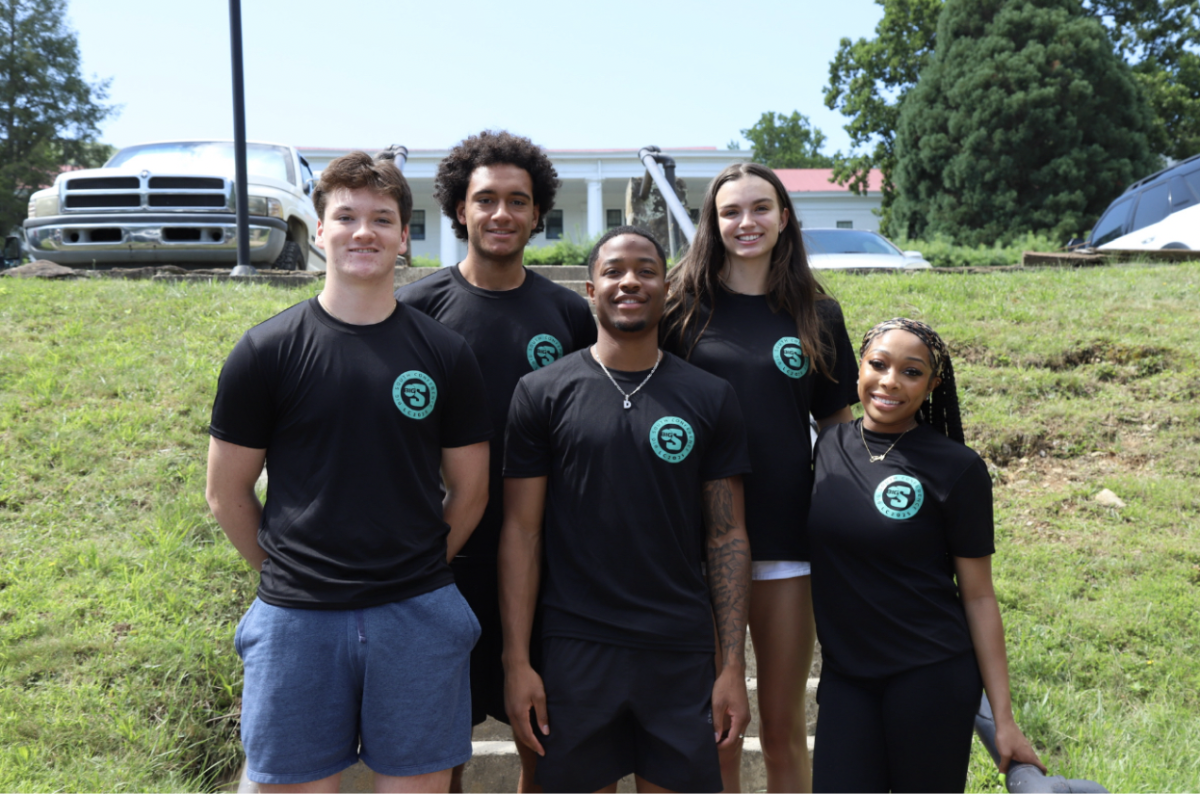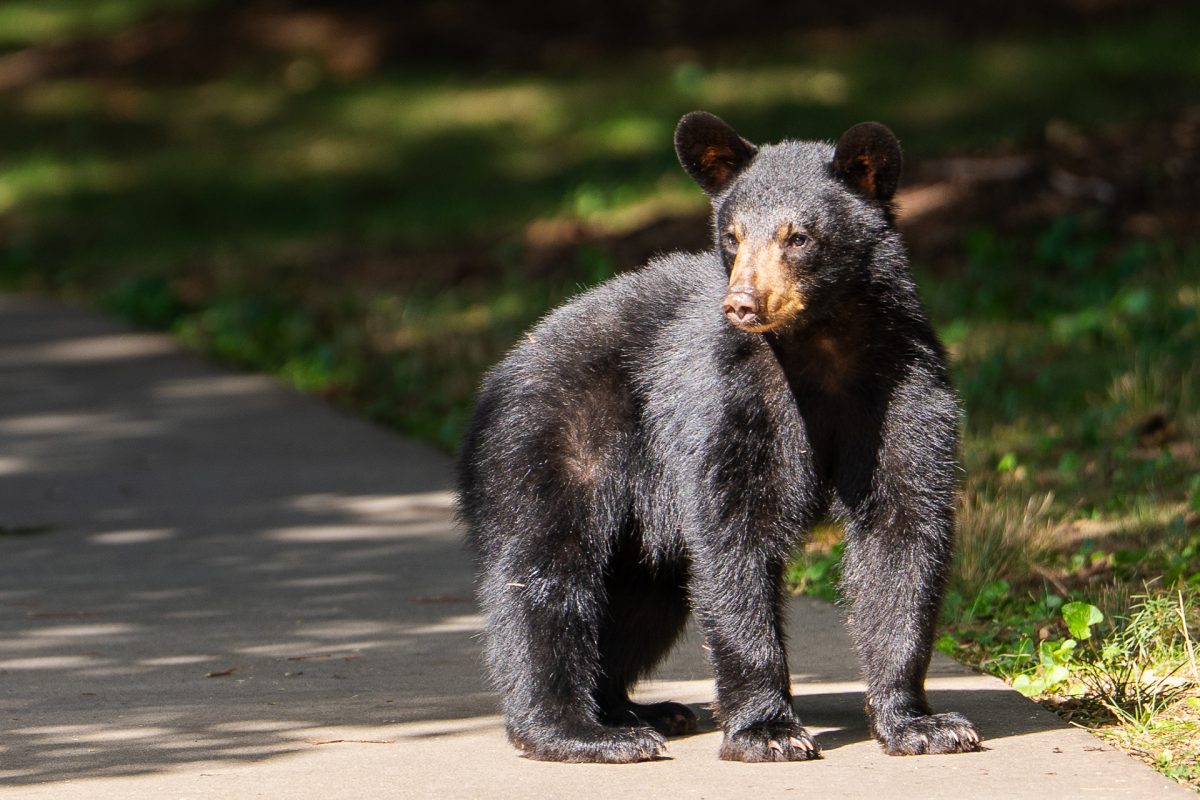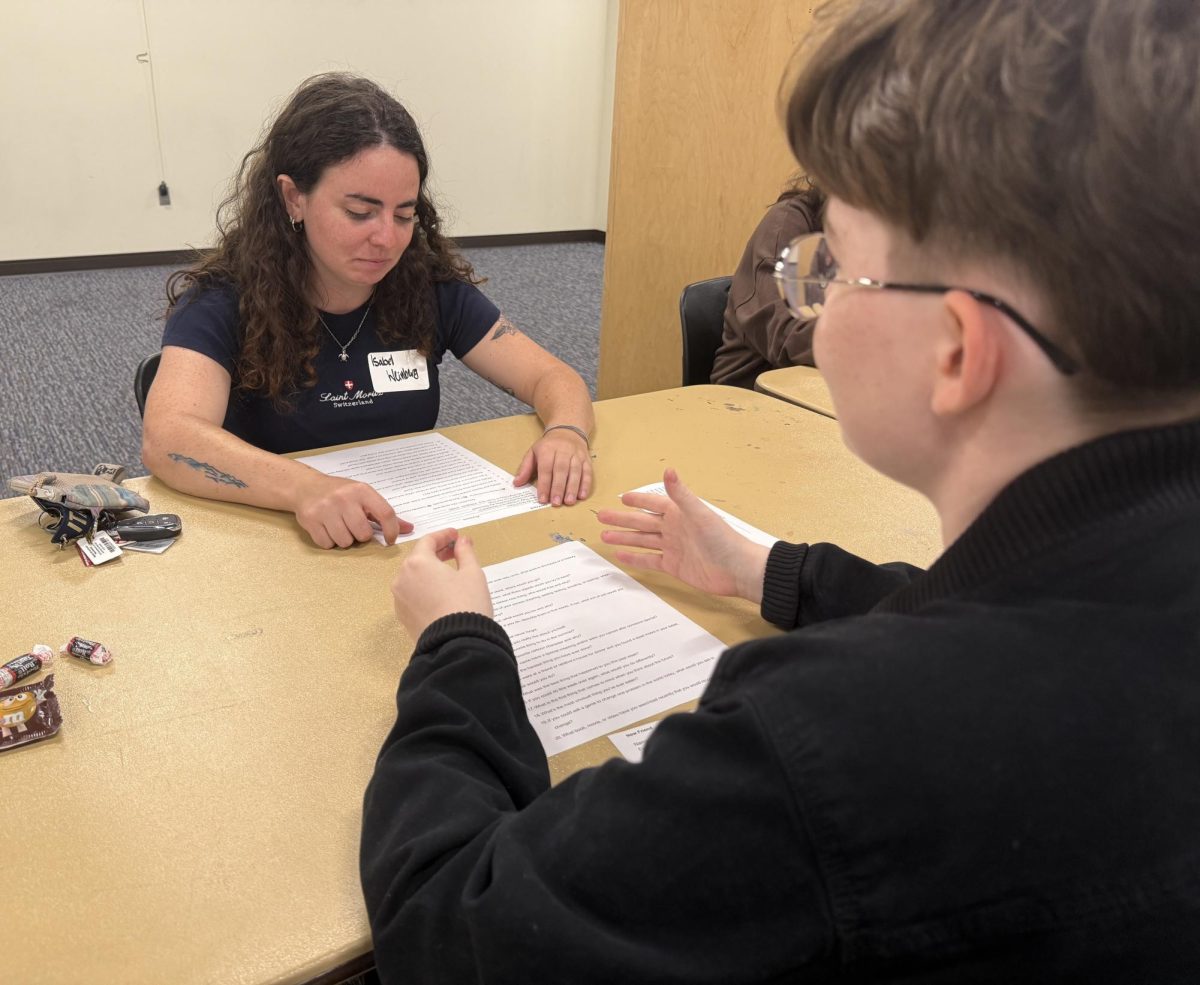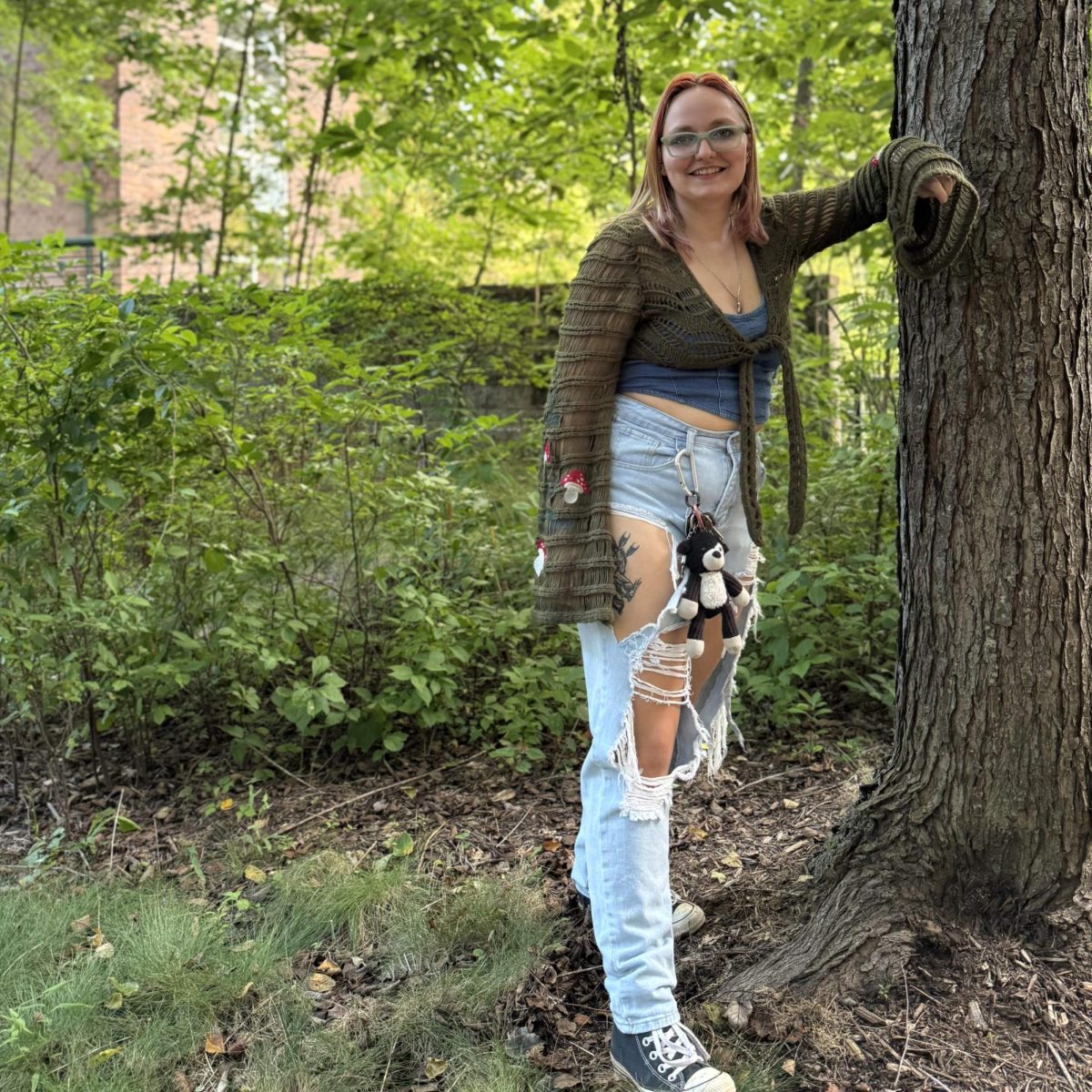Gretchen Ledford
Contributor
[email protected]
Asheville Journalist Jennifer Bowman said investigative news stories do not come tied up with a big shiny bow magically conjured by reporters out of thin air and published the next day.
“Documents tell the story — numbers, facts, figures,” Bowman said, “It’s not sexy like they make it in the movies. It doesn’t happen to a music montage in the span of a few minutes. But more often than not, the best stories lie hidden in a records request, and you’ve got to be willing to work at it.”
Cue applause from a long line of female journalists, going all the way back to the first investigative journalist, Ida Tarbell, in the early 1900s. Hard work, not sex, makes a great reporter.

A scant 10 days into her new job as the Buncombe County government reporter for the Asheville Citizen Times, Bowman faced one of the biggest scandals ever reported upon in the mountains. The FBI was investigating the former county manager, Wanda Greene, for inappropriate financial transactions.
“Only a few days into the job, and I am still trying to set up first meetings with commissioners and county staff just to introduce myself. I wasn’t able to finish that list before I just had to start asking people about one of the most controversial stories ever,” Bowman said, grimacing at the memory.
Bowman admits it was not just her relatively new face on the the scene creating difficulties; usually, she gets some time to build credentials with sources.
“I am young. I’m friendly and sometimes they don’t understand when the young and friendly woman is asking you ‘Why didn’t you know about these questionable financial expenditures?’” Bowman said.
According to journalist Geneva Overholser and professor Kathleen Jamieson, from the nation’s founding, the press has been the watchdog for the masses, raking through the muck to expose the source. Yet, according to research from women’s media organizations when that same eye turns inward, many of the issues glare right back.
Bowman graduated from San Diego State University six years ago. She said while her female professors gave plenty of advice about arguing for fair pay as a woman, other possible difficulties were never mentioned.
“I’m not sure I ever had any talks in college courses about how to handle how women are harassed, which I think is prevalent especially in media,” Bowman said. “Maybe that should have been talked about. Maybe that was ignored. A missing gap in my career.”
Behind the stories, female reporters say, “me too”
In recent months, reporters have called out men in power for their sexist treatment of women, starting with Harvey Weinstein. While the movement echoed back into the cave from which it came, the same excuses are heard from within, “A different time, a different culture.”
Barb Blake, who retired from the Citizen Times in 2014, saw many changes in the newsroom during her 40 years there. In an email correspondence she described a newsroom where most of the women were put out on “women’s pages” — covering society news, food, weddings and the like.
“One of my, not official but clearly expected, duties was to fetch coffee from the back shop for my city editor throughout the night. Our desks backed up to each other, and when he was in need of a refill, he swung his arm out with his empty mug in his hand and simply said, ‘More coffee, dear,’ never even looking up. This was at the beginning of my career, mid-’70s, and I was so young and naive I probably didn’t question it then,” Blake wrote in an email.
According to Blake, getting coffee was not the worst of it. In addition to various sources who would draped their arms around her in uncomfortable ways, she faced harassment within the office as well.
“There was one older staff member, covered religion, of all things, who was a verbal lecher, always making semi-lewd remarks in a whispery, Barry White-esque voice in the elevator, or he’d call on the phone from across the newsroom to say how lovely I was looking today in that sexy blouse, or whatever,” she wrote.
In a 2013 study of about 1,000 female reporters, the International Women’s Media Foundation found nearly half reported sexual harassment on the job and 14 percent experienced sexual violence.
Jennifer Forsyth, the deputy chief of investigations at The Wall Street Journal and part-time Asheville resident, wrote in an email that for many women field work can be dangerous.
“When I was a reporter in the field, I tried to be sure that I didn’t meet alone with a source unless absolutely necessary, by taking along a photographer or a colleague, and that my bosses knew where I was at all times,” she wrote.
Fox News contributor Geraldo Rivera gave a different perspective in his response to former NBC Today Show anchor Matt Lauer’s accusers.
“News is a flirty business,” Rivera tweeted.
Yet the same study from the International Women’s Media Foundation reported the source of sexual harassment and violence came most often from a coworker or superior.
“I wish I could say those days are over, but I know of at least one young female journalist who, in the last four or five years, had to continually navigate a male boss who relentlessly asked her to go out with him for drinks after work, to concerts, etcetera,” Blake wrote. “And this was a guy who would have a say in her annual review, and with whom she was often basically alone in the newsroom on night shifts, putting her in that awful position of not wanting to piss him off but certainly not interested in dating him.”
Forsyth noted in addition to harassment, female journalists also face bias.
“Gender discrimination is real in this business. I know of women who have discovered a great story and have had to fight to keep it from male colleagues,” she said.
Forsyth and Blake both said there were, and are, men who did step up against such behavior. These supportive male colleagues and role models helped without being inappropriate.
In the 2017 report from the Women’s Media Center, women make up a mere 38 percent of print journalists. While the study notes the wage gap between men and women is shrinking, it still exists — particularly for minority women.
“I experienced the absolute reality of the gender pay gap,” Blake said, “learning only by accident ,salary talk was a total no-no, that I was paid significantly less than male counterparts who held the same rank but over whom I had years of seniority- and outnumbered many in journalism awards. I hope that reality has changed.”
By Bowman’s account, the Citizen Times has been both supportive and fair. As a mom of a toddler, whose partner also works at the paper, she said she found a sympathetic ear with both her direct boss, a father himself, and the news director, a mother of two.
“It is so hard, I can’t describe just how hard it is. It is hard when you are a stay-at-home mom, and it is hard when you work,” Bowman said. “The more support you can get from your coworkers and your bosses makes it so much easier to do your job effectively both as a mom and as a reporter.”
Bowman said the struggle leads to frustration at the demands of the job.
“You feel guilt, then you feel stubbornness. Like, I am a career woman!” Bowman said, slamming her fist on the table, then sighing. “It is a balance and I am lucky to have both a supportive partner and work environment.”
Bowman said most of her editors have been male, which makes sense given female editors number about one in three, according to the WMC report.
Not the case at the Mountain Xpress, according to Virginia Daffron, managing editor for the local weekly.
“All our editors are female.” She smiles at the surprise, then explains. “My theory is that we are all women who have gotten to a certain age —middle age— and have other commitments in life. Most of our editors are part-time, and that allows them to maintain that flexibility.”
Daffron said her limited experience in journalism did not given her much perspective to draw from. She came to the field in an untraditional manner, starting in 2015 at the weekly after a career in freelance writing for trade publications. She said one thing still strikes her daily.
“The biggest thing that I confront within the office and with sources, is that men of all ages just talk over me. Interrupt me. Why do they do this?” Daffron said. “I really don’t get it. I have to overcome my socialization and speak up.” she said, closing her eyes as she shakes her head.
Every woman interviewed agreed. Be prepared to be interrupted. Be alert for yourself and others.
“Maybe as women we just internalize it and just think, ‘That’s the way it has been, that’s how it goes, just let it go.’ But, that’s why we aren’t having these conversations enough. It has just become ingrained and you just let it slip off and keep going,” Bowman said. “But that’s not the right thing to do either.”
Women rake up the best muck
Men make up many of the big names in journalism history, but Tarbell gets the credit for being the first investigative journalist. According to her biography, she used her research skills to dig down deep, bringing to light the corruption of John D. Rockefeller.
Following in her footsteps 118 years later, Forsyth tells of being drawn into in-depth reporting slowly.
“I wanted to be a journalist because I love to write and to tell people’s stories,” Forsyth said. “The investigative bug came later. As I got more experience and saw waste, corruption, cruelty or injustice in the lives of the people I covered, I desired to expose those who were to blame.”
Forsyth explained her passion for investigations grew with her awareness of the world.
“Just one story can spark the flame. It’s the one story that makes you want to dig deeper and to figure out who to hold responsible for the wrongdoing and how to prove it. I have put crooks in federal prison and helped to change state and federal laws,” she said.
Now, as deputy chief at WSJ, her passion lights the way for others. In describing her job, Forsyth emphasizes the hard work each piece takes.
“Many of the best investigations involve the patience of reading reams of documents. One of the secrets of this job is to read everything you can get your hands on — books, magazines, government reports, consumer blogs, even cereal boxes,” Forsyth noted.
Bowman, too, described a grittier version of the job. She scoffed at the portrayal of female journalists in shows like Parks and Recreation and House of Cards. She said she spends most of her day answering emails, reading court cases and going to public meetings.
“I believe this is a really good age for journalism, despite the public opinion,” Bowman said, looking both worn out and inspired as she speaks. “So many excellent reporters doing honest hard work to keep the public informed.”
Down the street and up the stairs in the offices of the Mountain Xpress, Daffron brings up an advantage women in this town have over their male counterparts.
“In Asheville, on the government side, they are all women. The mayor is a woman, the city attorney is a woman, as is the assistant city manager and the executive director of the tourism development. As many of the decision makers are women as they are men,” she said.
According to Margaret Ellis, manager for Buncombe County human resources, women account for 55 percent of the county government.
Daffron said as a woman in the field, leveraging the desire of other women to be helpful is an excellent strategy.
The numbers from the WMC prove the truth in her statement. Women journalists use female sources 42 percent of the time, compared to just 27 percent of their male counterparts. The argument for the need of the female perspective becomes particularly apparent in the numbers on reproductive health reporting, where women only account for 37 percent of articles.
“You see men who may not fully understand the impact, or even be aware of an impact that women may face every day. Whether it is a shortage of doctors that are women specific, or the access to Planned Parenthood, or the struggles of working moms,” Bowman said with a sigh. “It is a lot easier if a woman is in the room to offer input, offer ideas, offer counterpoints too.”
Despite the statistics on pay inequality, harassment and threats, women continue to hear the siren’s call. UNC Asheville reports for the 2018 spring semester, 60 percent of mass communication students were female. The number reflects findings of a nationwide survey in 2013, which found two-thirds of all journalism undergraduates were female.
For now, the next generation can follow the advice offered by each of the journalists interviewed for this article. Blake said it best.
“Your number one, non-negotiable assets are your integrity and your reputation for fair, unbiased and factually correct reporting and writing,” Blake said. “With those, you can stand tall and rest easy no matter who challenges you.”


![Brooke Pedersen [second from the right] and Luis Reyes [right] hold banners during the Wrap The Woods event.](https://thebluebanner.net/wp-content/uploads/2025/09/ELIZABETH_PRITCHITT_IMG_3470-1200x804.jpg)



















